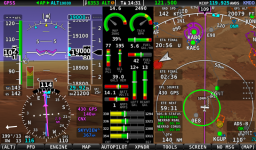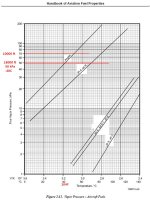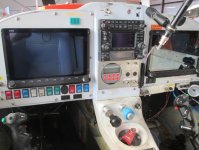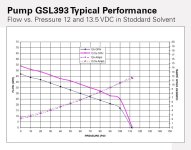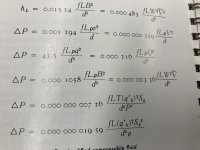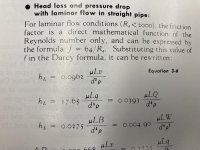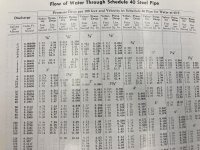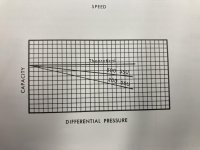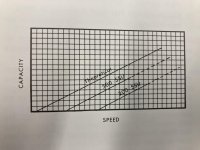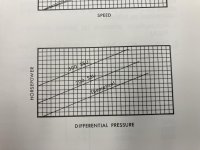I’m in the very early learning stages of an electrical design to support an EFII system - at this stage unsure on SDS or EFII.
It may not be popular opinion (and not trying to open a debate on this) but feel a single box power system such as the vertical power PPS or EFII bus manager are single points of failure and I don’t think I want to be IFR with a family member relying on a magic box to ensure electrons to the injectors. However, the bus manager comes with functionality to ensure a backup if the primary fuel pump should fail - without this there is no auto-switching to the backup fuel pump if the primary pump fails.
No problem I figured, I would just run 2 pumps at takeoff eliminating the consequences of a pump failing at 300ft - and I was surprised to learn from Robert at EFII that this was not a good idea. I don’t know what Ross thinks for SDS. Apparently, the extra suction can cause a drop in pressure on the suction side, reducing your margins toward vaporisation and cavitation of the pump.
I hope Robert doesn’t mind me quoting him here but he can explain it better than me:
This also got me thinking whether these systems are worth the effort - my main reason for thinking about it was the support for auto gas in a io390 engine in the future (when avgas doesn’t exist anymore). But if autogas vaporises at 10,000 ft anyway maybe there is no point going ahead with this?
Obviously I wouldn’t be taking off at 10,000 ft etc running the 2 pumps but I take Robert’s point about reducing the margin.
So for SDS/EFII users (I am assuming an essentially identical system design with regard to fuel delivery to the engine):
1. How many people run 2 pumps at once on takeoff? Have you seen any issues?
2. Is there another simple solution to activate a second pump if fuel pressure drops in the first?
3. Am I overthinking this - the walbro pumps are apparently very reliable. Perhaps just running one pump is acceptable?
4. Does anyone run SDS / EFII using auto gas in a io390? (I am building a -14 so don’t have a lot of engine choice).
Thanks in advance - apologies if the questions are basic or ignorant! Just trying to learn about the systems at this stage and work out whether there is value in it for my build.
It may not be popular opinion (and not trying to open a debate on this) but feel a single box power system such as the vertical power PPS or EFII bus manager are single points of failure and I don’t think I want to be IFR with a family member relying on a magic box to ensure electrons to the injectors. However, the bus manager comes with functionality to ensure a backup if the primary fuel pump should fail - without this there is no auto-switching to the backup fuel pump if the primary pump fails.
No problem I figured, I would just run 2 pumps at takeoff eliminating the consequences of a pump failing at 300ft - and I was surprised to learn from Robert at EFII that this was not a good idea. I don’t know what Ross thinks for SDS. Apparently, the extra suction can cause a drop in pressure on the suction side, reducing your margins toward vaporisation and cavitation of the pump.
I hope Robert doesn’t mind me quoting him here but he can explain it better than me:
The lower the pressure in the suction end of the system, the closer you are to cavitating the fuel (forcing the fuel to vaporize).
When the pressure of a liquid gets down to the vapor pressure of the liquid, the liquid will start to change to its vapor state.
Auto gas will start to change to vapor at a pressure equivalent to about 10,000ft altitude, avgas does this at 18,000ft.
If you pull hard on the suction side of a fuel system, vaporization will occur at a lower altitude - you lose "margin" on how far you are away from cavitation in any given flight condition when the pressure of the fuel is lowered.
This also got me thinking whether these systems are worth the effort - my main reason for thinking about it was the support for auto gas in a io390 engine in the future (when avgas doesn’t exist anymore). But if autogas vaporises at 10,000 ft anyway maybe there is no point going ahead with this?
Obviously I wouldn’t be taking off at 10,000 ft etc running the 2 pumps but I take Robert’s point about reducing the margin.
So for SDS/EFII users (I am assuming an essentially identical system design with regard to fuel delivery to the engine):
1. How many people run 2 pumps at once on takeoff? Have you seen any issues?
2. Is there another simple solution to activate a second pump if fuel pressure drops in the first?
3. Am I overthinking this - the walbro pumps are apparently very reliable. Perhaps just running one pump is acceptable?
4. Does anyone run SDS / EFII using auto gas in a io390? (I am building a -14 so don’t have a lot of engine choice).
Thanks in advance - apologies if the questions are basic or ignorant! Just trying to learn about the systems at this stage and work out whether there is value in it for my build.
Last edited:



